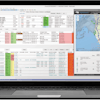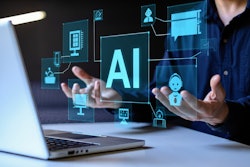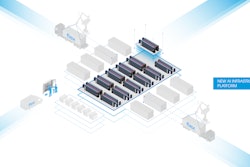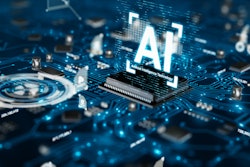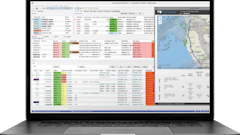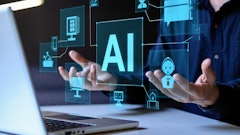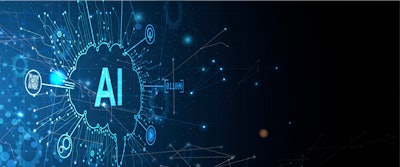
AI has made its way to the forefront of future of work discussions; there’s no question it has already become increasingly ingrained in the workplace and will continue to be used to drive productivity. In a recent survey of global decision makers at organizations with between $500 million-$5 billion, 60% said they plan to make AI a top IT priority in the year ahead. Enterprises’ bullish approach translates to investment, as 53% expect to increase generative AI budgets by up to 25%.
The same survey indicated that nearly all (95%) respondents plan to accelerate legacy modernization plans. However, having plans to modernize can mean different things to different people. What matters most is how to modernize. Robust value cases are key because modernization often replaces something that already works, is aligned to current processes, and is fully depreciated, with something better but more costly. A broader view of cost efficiency helps prevent programs from stalling after they start. Modernization must be exact. Long transformation programs risk organizations falling behind competitors by the time they finish. Leaders should focus on upgrading specific, high-impact business processes directly tied to growth strategy. With the importance of modern AI adoption clear, attention turns to the latest developments and how to maximize the ROI on investments.
The role of agentic AI
Enter agentic AI; the next evolution of AI will be defined by autonomy. AI systems that never sleep, continuously learn and work with insights from vast amounts of data have transformative potential. Recent developments from software providers agree, finding that 2025 will see a surge in agentic AI adoption. AI-driven decision-making isn’t new; however, the way in which it augments human teams can be. The same report found that 96% of organizations are already using AI for decision-making, with nearly a third (29%) trusting it to handle high-stakes decisions.
As a result of widespread usage of AI for decision making, this is just keeping up with the crowd. To truly differentiate, this must be augmented with AI decision making that is embedded into the flow of work or business process. Having leaders making decisions based on AI prompting, without it being properly grounded and part of the business processes, brings inherent risks. Lack of integration brings risk that the decisions will not actually incorporate the right input and increases the probability they will be less than accurate. Precise modernization of those underlying business processes (focusing on the ones that matter most) will directly influence how effectively agentic AI can be embedded into the flow of work.
Unlike static AI models that require manual prompting, AI agents continuously adapt, learning and aligning with organizational needs. Over time, this builds trust, allowing agents to own and execute tasks within their scope. This saves time without the need for employee oversight and means more time to focus on value adding tasks for the team, without the need to focus on repetitive and time-consuming tasks. Delegation, simplified.
Agentic AI collaboration
Agentic AI is not here to replace the human decision maker. Instead, collaboration can best be developed by combining strengths. Fortunately, one of AI’s key strengths is its ability to be a specialist, with fine-tuned accuracy in trained areas. AI agents can embed across tools, become a part of processes, and augment work without team disruption. The use of agentic AI should be an indicator for employees to build skills so they can collaborate seamlessly. Rising tides raise all ships. Employees are able to build new skills which lead to them being more impactful, while organizations prosper from both the technology and the human being more valuable. Training and transparency are critical in this teamwork.
Transformative potential on the horizon
It’s easy to be excited by the prospect of productivity reimagined; with the opportunity to streamline processes, analyze vast datasets, and support strategic planning, potential is expansive. Agentic AI can enable round-the-clock patient support and advanced health monitoring in healthcare. Contact centers can run seamlessly as AI manages limitless calls and autonomously executes next-best actions. Supply chains can build resilience with AI-driven management and real-time re-routing.
That said, responsibility in implementation is non-negotiable. It starts with leaders, who will now be tasked with managing both people and AI agents, prioritizing collaboration between human adaptability and machine intelligence. Employees, in turn, must be resilient as roles evolve. Responsible adoption will be critical to maintaining trust, oversight, and ethical deployment in this new era of work.
Best practices for the next iteration of AI advancement
Adhering to responsible best practices cannot be optional. It must be top of mind for organizations, leaders, and employees. There’s no doubt that agents expand the capabilities of AI, however, their behaviors must be deployed and used responsibly. Determining the right level of autonomy and being intentional about which processes to modernize will define the ROI of these programs. Leaders must resist the temptation to modernize broadly; instead, they should be laser-focused on upgrading the business processes that will deliver the most impact, fastest. Goals and actions adhere to organizational strategy, values, and principles. Determining the right level of autonomy ensures AI operates effectively, balancing efficiency with human oversight and maintaining ethical standards. Modernization should be directly tied to how agentic AI will deliver value, whether that be through process automation, real-time decision support, or unlocking data capabilities.
Prioritizing the human factor is essential for maximizing responsible AI adoption. With survey findings indicating a low confidence that leadership can reliably differentiate between AI and human-generated work, organizations must establish clear metrics to measure AI’s contributions alongside employees. The need for belonging, engagement, and purpose in the workplace cannot be underestimated within the team.
At its core, data is the foundation of agentic AI. Large language models may power a wide range of AI tools, including agents, but impact depends on how well data is gathered, managed, and leveraged. Prioritizing clear and structured data means more accurate, more efficient, smarter decision making. Transparent training methods prevent bias and uphold trust in a way that prioritizes ethical AI. This responsible approach prioritizes both people and trust.
AI and trust: a responsible path forward
Agentic AI represents a pivotal shift in how organizations operate, offering unparalleled efficiency, decision-making, and process automation. However, its success hinges on responsible adoption. As businesses embrace this next wave of AI, leadership must foster collaboration between humans and AI agents, ensuring innovation drives both productivity and trust.


